Organ Recording from the Ground
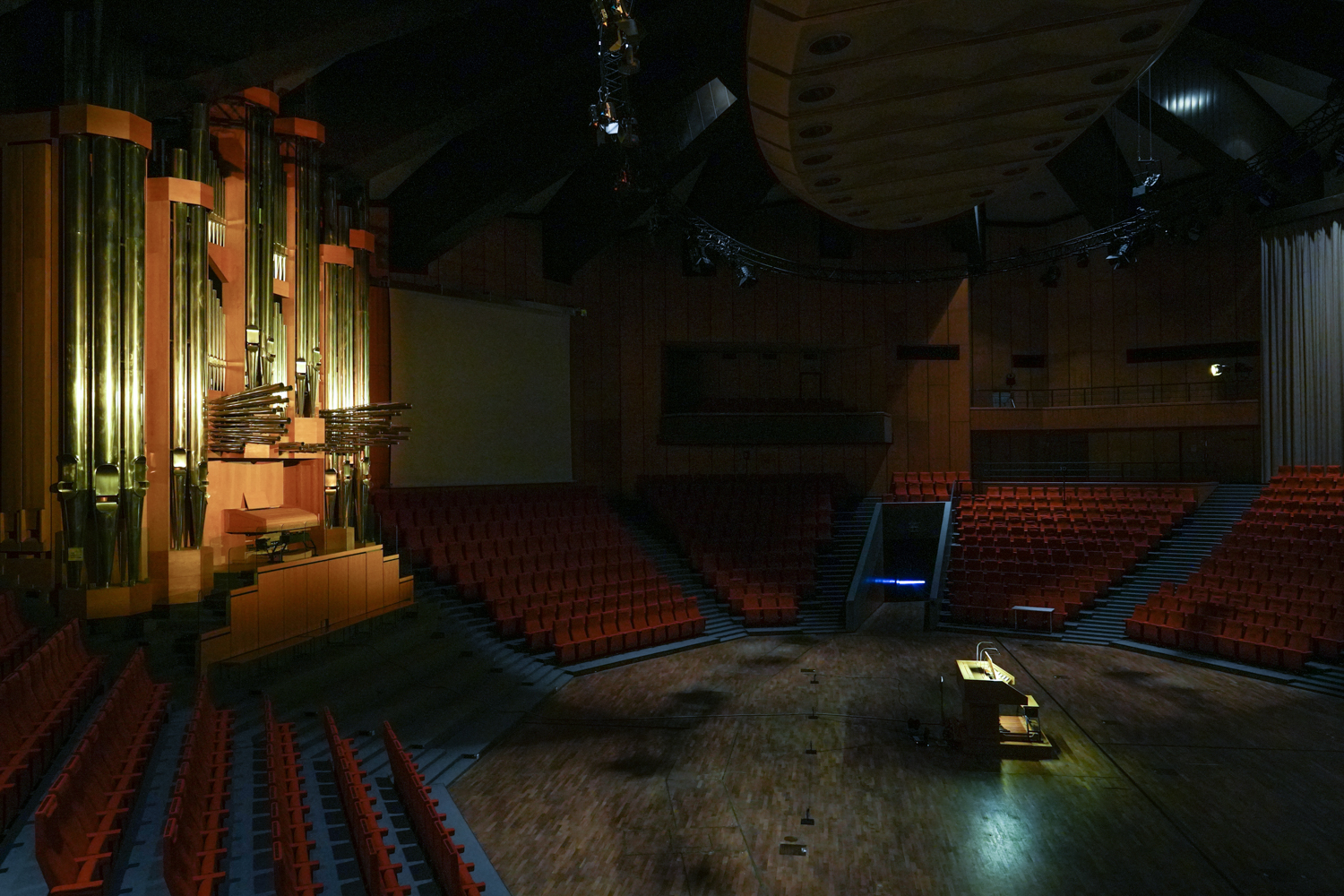
It seems to be quite common to record organ with microphones placed at the same height as the pipes, right in the front of the organ. That requires a super high microphone stand. However, it is worth to try out other options, depending on the hall where the organ is located in. Especially symphonic organ music usually longs for a decent amount of reverb. Organs are intonated to sound nice at the listeners place down in the nave of a church resp. in the seating area of hall. Placing the microphones there, is, however, not necessarily a good idea. The human brain processes the sound in a different way when listening to the music with headphones or speakers at home compares to be live on location. At home the sound recorded at the listening position would likely be percepted as having way too much reverb, making the music very unclear and hard to understand.
In churches the challenge is to record the organ without too much reverb, maintainig a good room experience. Placing the mics in front of the organ is therefore a good starting point. The situation is a bit different in concert halls. Getting a good amount of room sound to support the music is one challenge. A large stage that is reflecting the sound is another. Reflecting surfaces can create a comb filter effect: when the same sound travels on two different paths (direct and reflection), merging and interfering at the microphone, several frequencies are cancelled out. The result is distorted sound.
This is easy to calculate and to proof in reality. There are several strategies to minimize this problem.
Placement high in front of the sound source
The higher and the closer the microphones is to the sound source, the longer is the reflection path of the sound and the softer is the reflected sound. That reduces the combfilter effect.
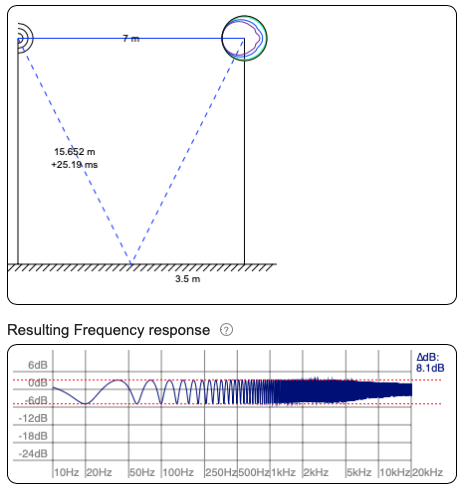
Align the null of a directive mic
Microphones with a directive polar pattern have one or two directions in which they are most sensitive, and one or two directions (”null“ or ”off-axis“ in which they are least sensitive. It is possible to try to turn the mic that way, that its null to the direction of the reflected sound. That is theoretically very effective, however, in practical circumstances it might be difficult to find the correct angle. Usually there is no time to make exact measurements.
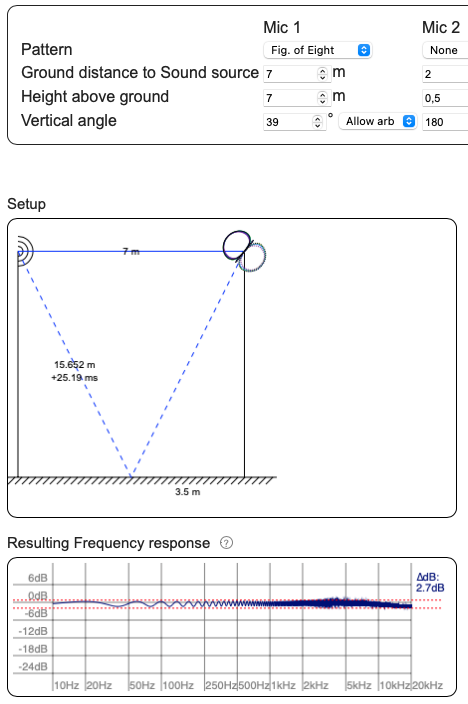
Place the mic on a carpet
Fabric material can absorb sound above a certain frequency to a certain amount. It should be ok the just place a piece of fabric right at the point on the ground, where the sound is reflected. The practical solution is to put the microphone on the ground on the fabric, because that way the reflection point is easy to determine – it is very close right in front of the mic. As a real microphone is not indefinitely small it cannot be placed at a height of zero. That is why there is still some comb filter effect left over, but it might be possible to use an equalizer to balance it.
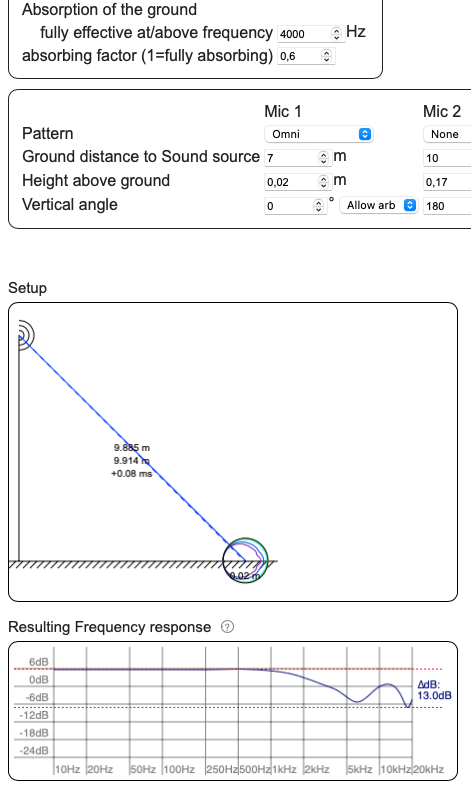
Combine two microphones
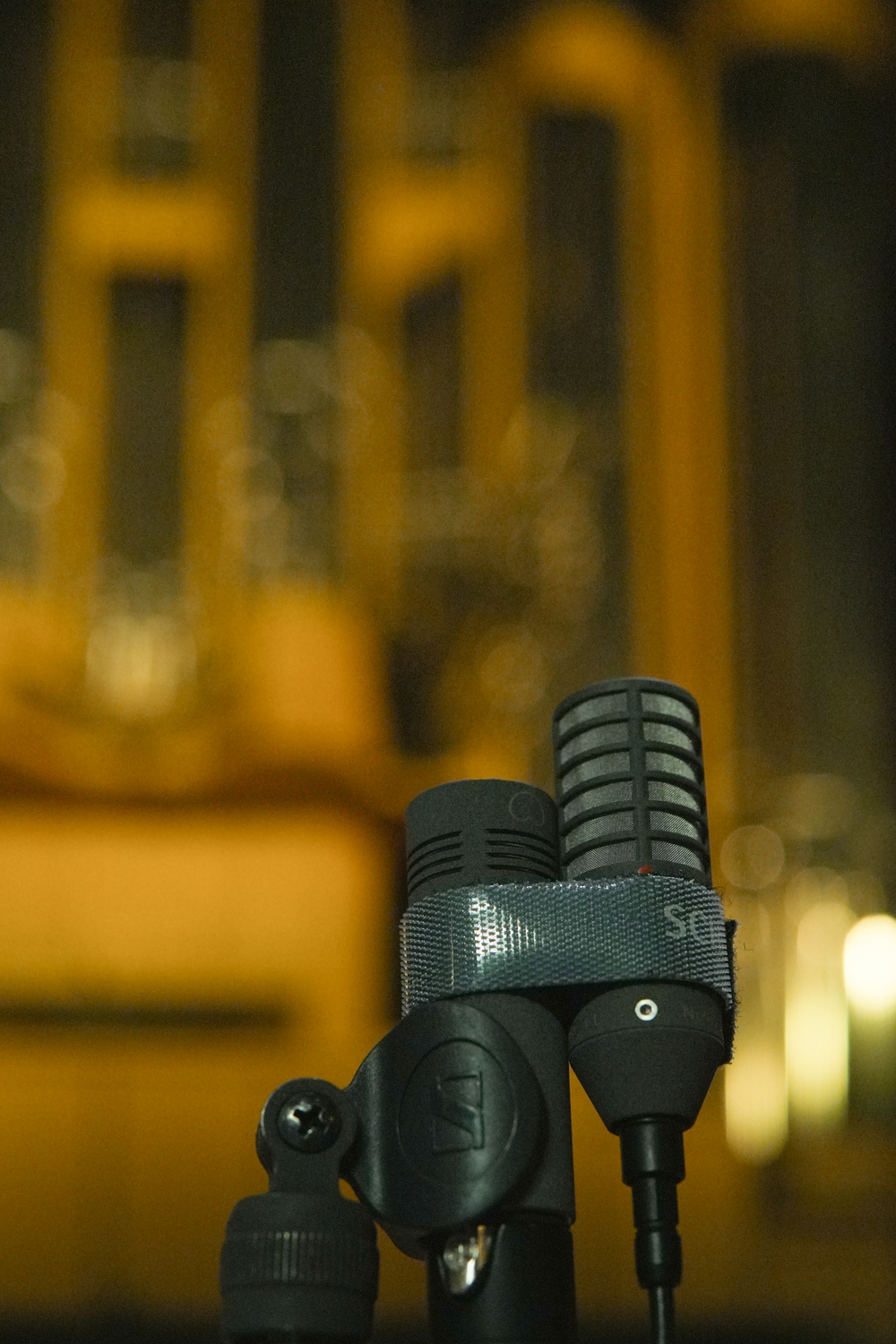
Two coincidentally (=exact at the same spot) placed microphones of different pattern and angle can be mixed and behave like another virtual microphone with a pattern, that depends on the mix of the microphones. A cardioid facing upwards plus a figure of eight facing backwards result in a super-cardioid microphone. The mix of the two microphones defines, at what angle the off-axis of the resulting pattern is. This is a chance to determine in post, at what mixing level the combfilter is at its minimum. The mix also defines how much room sound is captured.
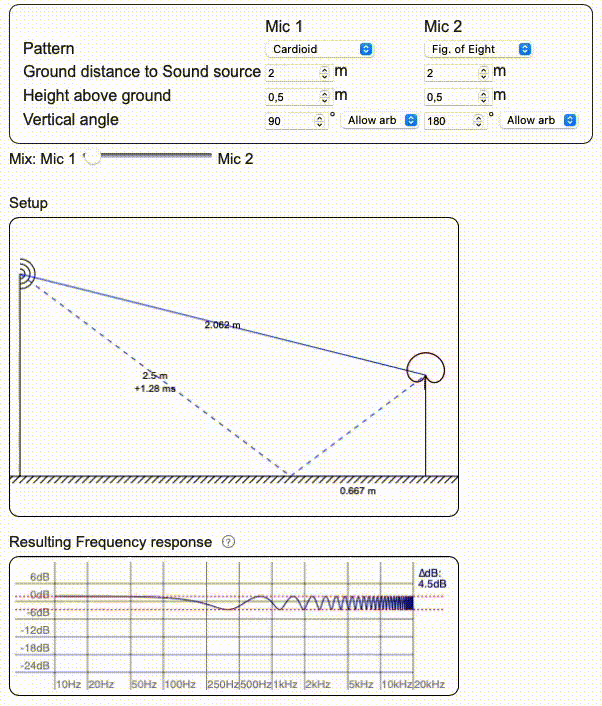
It is possible to place the microphone duo close to the ground. Real life microphones have no ideal frequency independent polar pattern and it is hard to place two microphones exactly at the same distance to the sound source. However, the result is good enough.
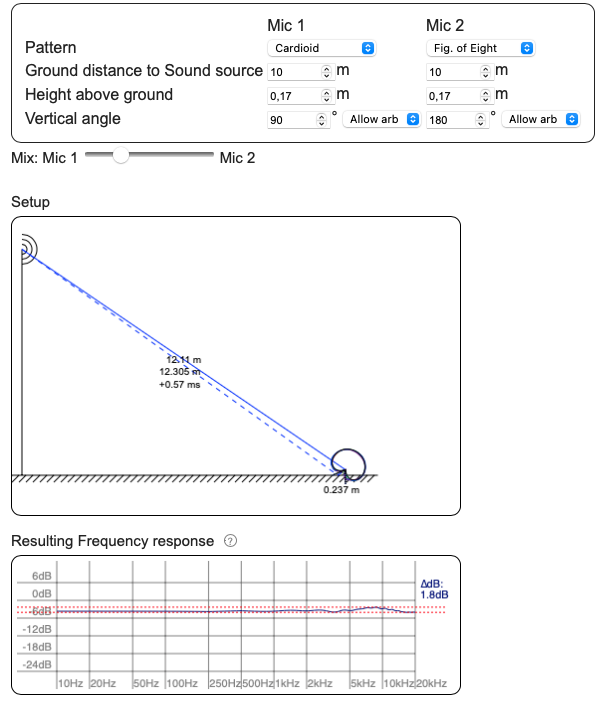
6 microphones to get everything
The disadvantage of using directive mics is their lack of low end. Especially for organ it is crucial to capture frequencies below 40 Hz. It makes sense to add two omni microphones for that. They can also be placed close to the ground, vertically, and filtered with a high cut to attenuate the frequency range where the comb filter could have taken place. A real omni microphone is less sensitive for high frequencies that are not coming from the front. So the polar pattern itself does the eq-ing for us.
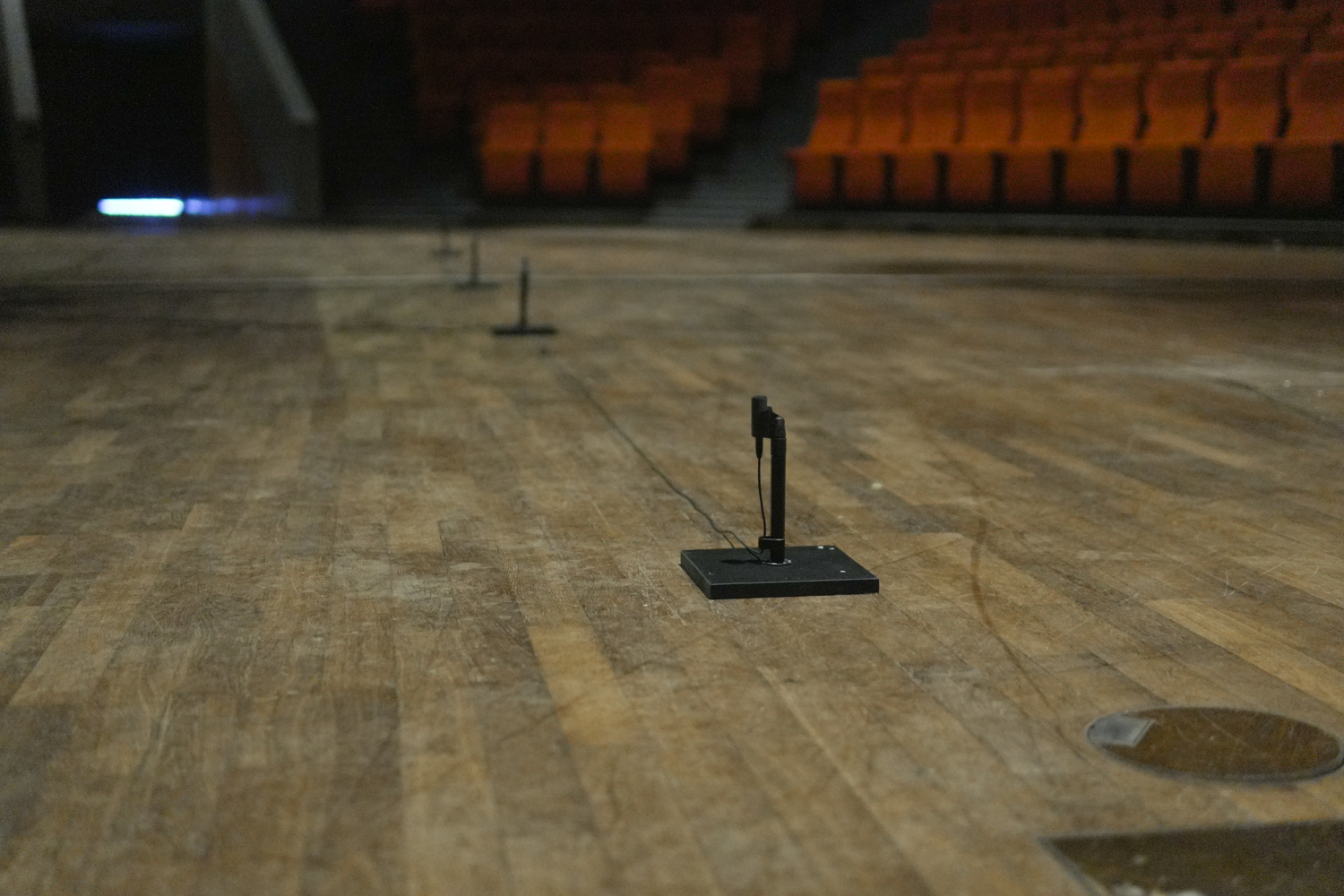 Audimax of the Ruhr-University Bochum, Germany. Organ by Klais.
Audimax of the Ruhr-University Bochum, Germany. Organ by Klais.
